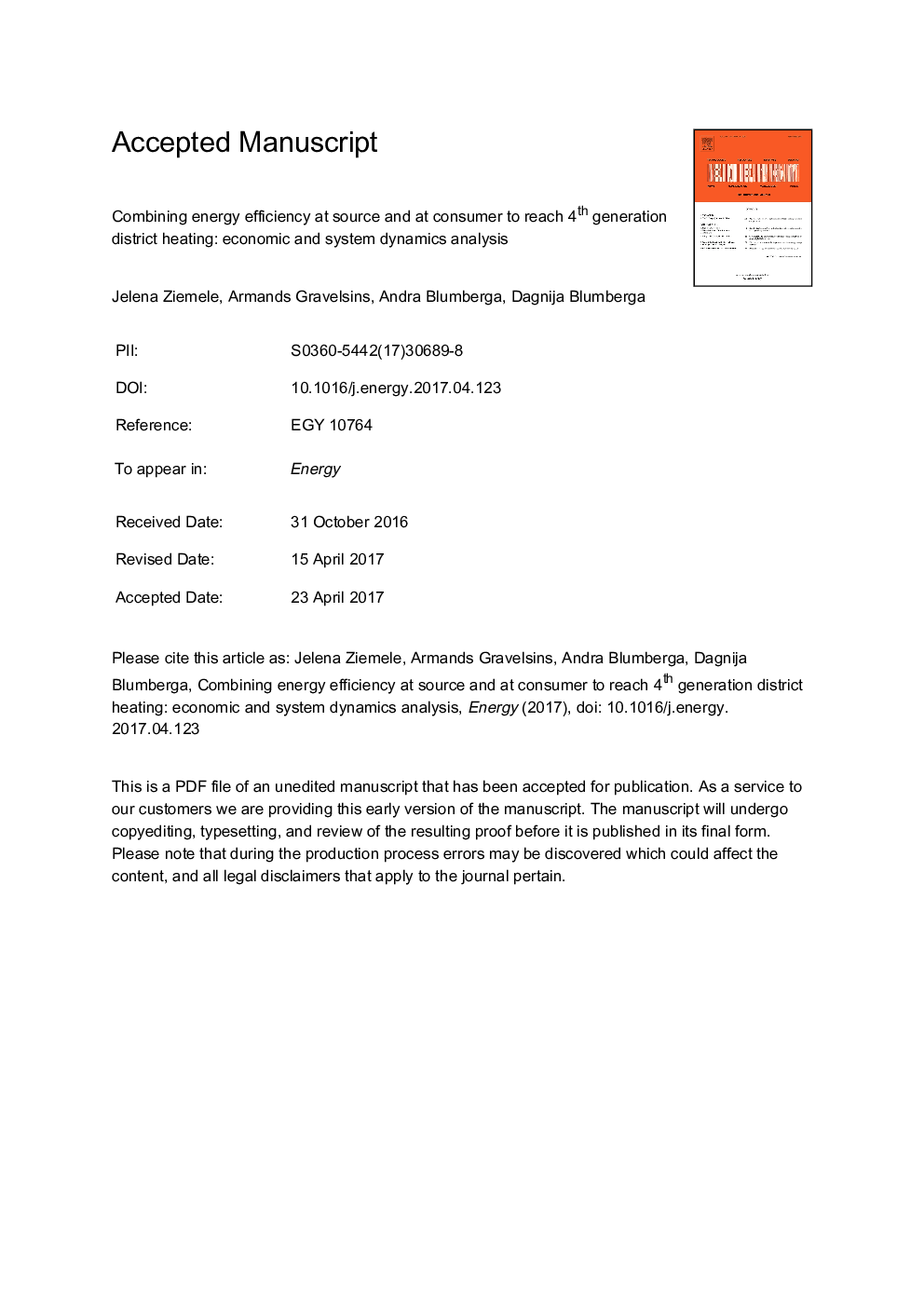| Article ID | Journal | Published Year | Pages | File Type |
|---|---|---|---|---|
| 8072775 | Energy | 2017 | 21 Pages |
Abstract
The article examines the transition from conventional district heating (DH) system to a 4th generation DH (4GDH) system using system dynamics modeling and economic feasibility analysis. Six alternative scenarios are studied. Energy saving measures reduce energy consumption, CO2 emissions and installed capacity of heating equipment thus facilitating the transition of the DH system towards zero emission system. Reduction of the required installed heating capacity allows implementing a low-temperature regime for heat distribution networks. For four of the analyzed scenarios this regime was achieved without increase of electricity consumption for heat supply. Results show that the implementation of 4GDH depends on the policies applied. The research identifies a balance point between the implementation of energy efficiency measures at the source and at heat consumers' side. The article shows how the price of a fossil fuel influence the share of heat energy production and the balance point between investment at the source and heat consumers side.
Related Topics
Physical Sciences and Engineering
Energy
Energy (General)
Authors
Jelena Ziemele, Armands Gravelsins, Andra Blumberga, Dagnija Blumberga,
